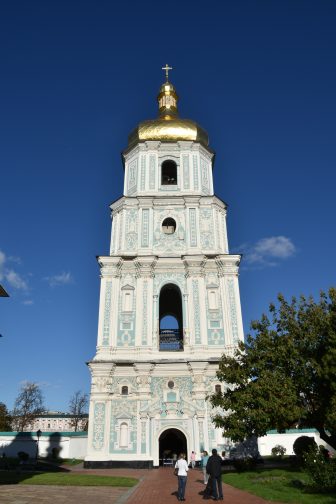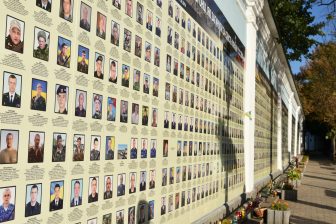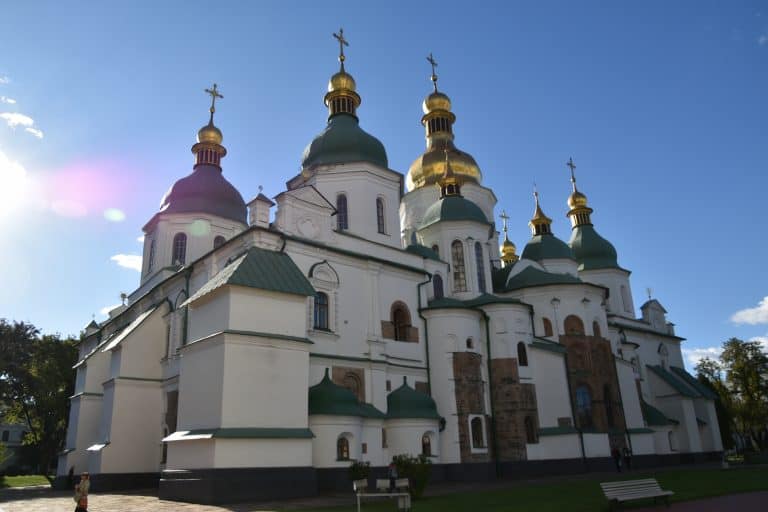
[ Sept. 2018 ] I continue talking about our sightseeing tour in Kiev in Ukraine.
After St. Volodymyr’s Cathedral, we went to Zoloti Vorota (Golden Gate).
We had visited here the last time we came, too, and this gate is not gold, despite its name.
This was modelled from the gate with the same name in Constantinople and borrowed the name itself, too.
Well, we had heard a different explanation last time, though.
Anyway, the statue in front of the gate is the son of St. Volodymyr, called Yaroslav, and he is holding up the model of St. Sophia’s Cathedral, which we were going to visit.
This cathedral he is holding looks like a cake, so people call this statue ‘Statue of Kiev Cake’.
We moved on and found one building which looked like a palace, but our guide, Miloslava, dismissed it saying “That is a building of ordinary apartments for rent”.
It seemed that there were so many gorgeous looking apartment buildings in Kiev.
Then we came in front of an Arabic looking building called Karaite Kenesa.
This building was built by Wladislaw Horodecki, the architect who built the House of Chimeras, which we had seen on the first day.
Karaite are the people from Crimea, whose religion is a mixture of Judaism and some paganism in Turkey, and this building was their temple.
During the Soviet era, it was used as a theatre and a cinema and now it is the ‘House of Ukrainian Actors’.
From there, we went into an alley and came out to a small square where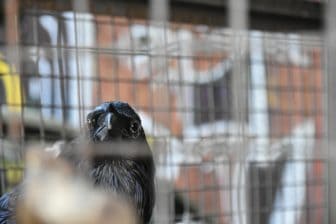
They do not know who and when they started keeping the birds, but with these ravens, this square has become a small centre for young people to gather, and it has a trendy atmosphere.
On the wall of the building facing the square, ravens were depicted artistically.
After that, we arrived at St. Sophia’s Cathedral.
This cathedral is the oldest in Kiev and was built in the early 11th century.
Sophia is not the name of a saint, but it means ‘wisdom’, which is the same as the Hagia Sophia in Istanbul.
This cathedral was the centre of education and culture and the place that hosted the first school and the first library in Kievan Rus’.
Unfortunately, taking photos was not allowed inside, but we saw magnificent frescoes and mosaics.
We saw the scaffolding, too, because they were working on some restoration, but because of that, the staircase which is usually closed to the public was open so we went up there.
On the wall of the stairs there were more frescoes, including one of a hunting scene, which is rare in a church.
Miloslava was excited, saying “I have seen these in the photos, but I have never seen the real things”.
It had been said that Yaroslav was buried here in this cathedral, but when a researcher opened the coffin to do some DNA tests in 2009, apparently, there was only a female skeleton in it.
There is a theory that after an examination during the Soviet time, someone took the bones out to the USA.
The bell 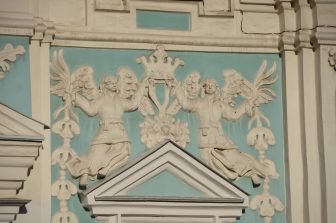
Its height is 76 metres.
The feature of this bell tower is that some angels wearing the Ukrainian traditional costumes are depicted.


